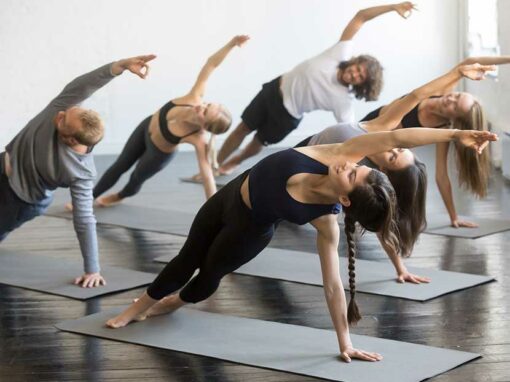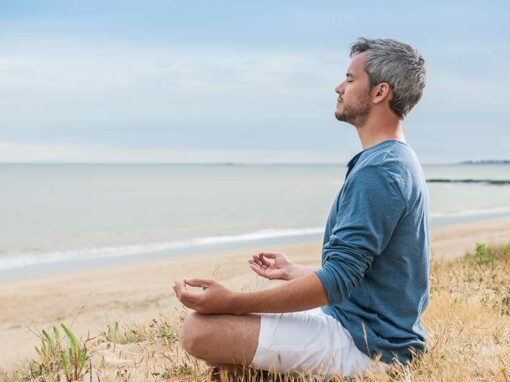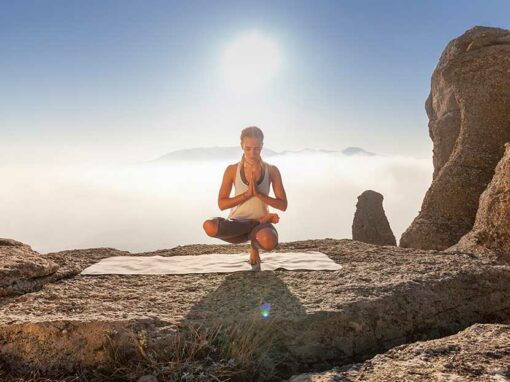How we live in the world and how we can change our attitude
– Guest blog post by Marianna –
Part 2 – The Niyamas
“The Niyamas are the fundamental practices that sustain a life based on love.” I found this description by Rolf Gates so true, and at the same time, so poetic.
In the previous article, where I talked about the Yamas, we saw how those five principles could change our patterns and bad habits.
While the Yamas are the attitudes we have toward the external world, the Niyamas, on the contrary, are the attitudes we adopt towards ourselves.
In reality, they are far more than an attitude. The Niyamas are not simple actions that can be studied but imply practice, a dedication that promotes stillness in the practitioner. They sustain the change that has been started through the Yamas.
1. Sauca
The first Niyama is translated as purity, cleanliness, of both the body and the mind.
We keep our minds and body clean by practicing asana and pranayama. We keep our bodies clean also by eating properly. It’s not about what we eat, but about the cleanliness of our choices.
By practicing sauca, we embrace a path of freedom and love towards our bodies and mind.


2. Santosa
Santosa is my favorite Niyama. I remember one of my first yoga lessons where the teacher walked us through this feeling of contentment about what we have and what we are.
Santosa is accepting what happens, and it’s not in our power to change. It’s appreciating the things we own and not feeling frustrated because we want to have more than we truly need. Santosa is a shift of focus.
The contentment needs to be sought inside out, and all events are just opportunities to grow, moments to shine.
3. Tapas
The 3rd Niyamas is about staying healthy by practicing and keeping the body fit, but it is also the spirit of inquiry.
It is the willingness to practice constantly to know more about ourselves and the passion for living fully. Years of consistent practice cannot be built on rigid self-discipline but on the desire to know more.
Tapas becomes yoga when there is no attachment to results. The difference between training and yoga practice is that in yoga, there are no winners and losers.
The journey is inwardly focused. There is no attachment to the results. This process leads to being progressively free from external influences, free from the circumstances of our birth, gender, family, life experiences.
4. Svadhyaya
We are on earth to learn, and by doing so, we need to study. The 4th Niyama is translated as self-study.
By constantly keeping us exposed to writers, poets, singers, movies, actors, yoga teachers, and anyone else who inspires us, we keep improving ourselves and are reminded of what is possible.
Svadhyaya is about being inspired by art, literature, and texts of all religions and by the people around us that motivate us to do and be better.
And to let inspiration lights our fire, our minds need to be open. Study whatever book or scriptures help you to get where you want to go. If you find something that works, apply yourself to it.
5. Isvarapranidhana
The final Niyama is surrender to God, letting go of everything, to reach samadhi, the union with the divine. Surrendering to God means dissolving the separation between ourselves and the universe.
God means different for each of us. It can be Allah, Buddha, nature, human potential, science, our own higher self. It makes no difference.
What matters is that we constantly bring our attention to the divine by feeling its presence everywhere, taking a loving interest not only in human beings but also in other beings.


Summary
The Yamas and the Niyamas give us the support we need as we face difficulties in our lives.
By following these principles, we have the opportunity to live a better life.
We lie to avoid suffering. We spend months, years believing that when that thing happens, we will be finally happy. We don’t appreciate the little victories because we are already projected to the next goal.
There is no end to these sufferings until we adopt a new way of thinking. Yoga offers a new perspective. All we need is the willingness to turn yoga from theory to action.
Resources:
- Meditations from the Mat by Rolf Gates
Marianna has been practicing Yoga for more than eight years, and in 2020
she completed the 200h Yoga Teacher Training in Vinyasa at YogaMoves in Utrecht.
She is passionate about sharing Yoga with others, living more sustainably,
and traveling. Here is her INSTAGRAM page.




